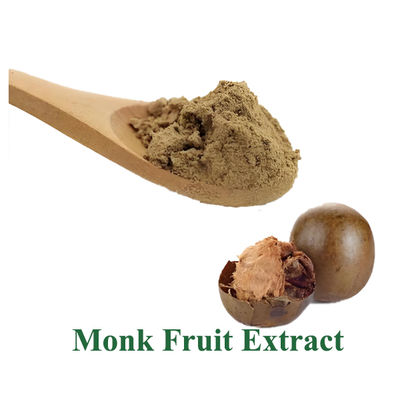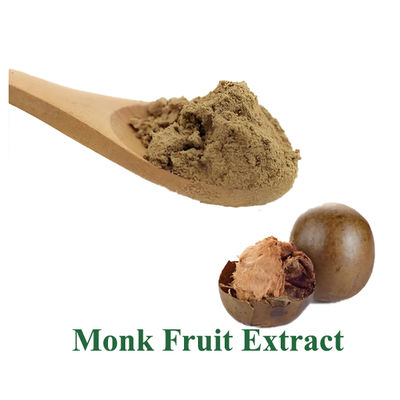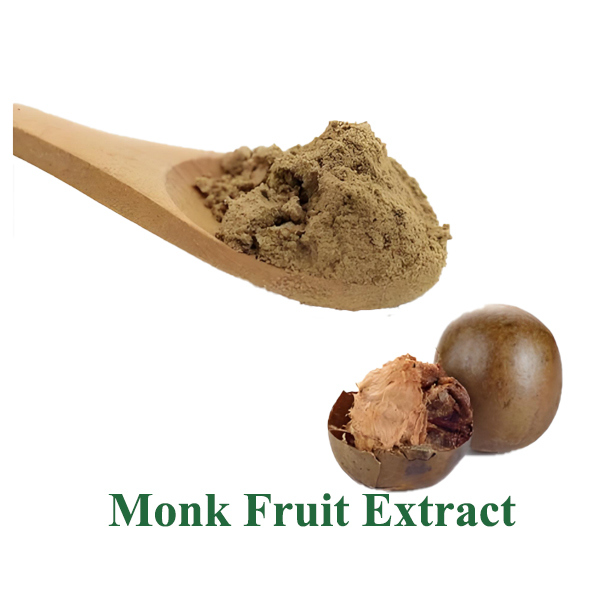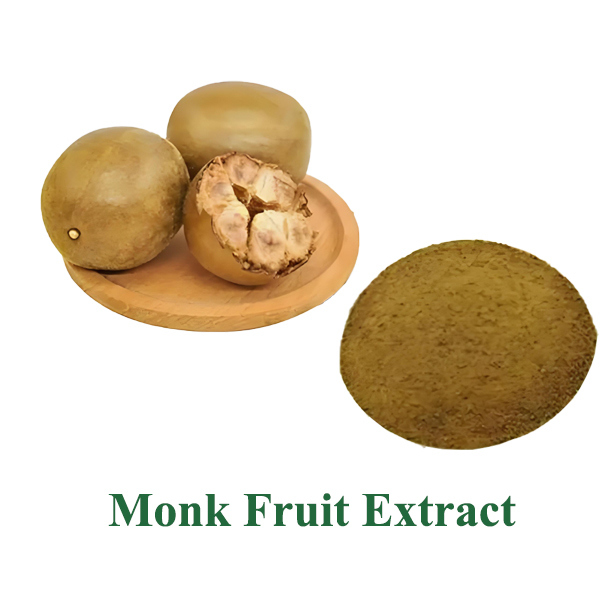-
Highlight
monk fruit plant extract
,pure monk fruit extract
,Baisfu monk fruit extract
-
Product NameMonk Fruit Extract
-
Purity99.9%
-
AppearancePower
-
Shelf Life2 Years
-
MOQ5KG
-
PackingFoil Bag,Bottled,Drum,Carton,Container
-
QualityNatural Raw Materials, Safe And Harmless, No Addition
-
Place of OriginShaanxi, China
-
Brand NameBaisfu
-
CertificationMonk Fruit Extract
-
Model NumberMonk Fruit Extract
-
Minimum Order Quantity5kg
-
Price314.59USD
-
Packaging DetailsFoil bag,Bottled,Drum,Carton,Container
-
Delivery Time10-15 work days
-
Payment TermsT/T,Western Union,D/P,L/C
-
Supply Ability20,000 kilograms a month
Monk Fruit Extract, a high-quality plant extract from Baisfu
Monk fruit extract is a natural sweetener obtained through water extraction and purification from the dried fruit of Siraitia grosvenorii, a plant belonging to the genus Siraitia of the Cucurbitaceae family. Its core components are mogrosides. Characterized by its "high sweetness, low calories, and pure taste," it also possesses antioxidant activities and is widely used in the food, beverage, and daily chemical industries. It is a high-quality natural sweetener that aligns with the trend of healthy sugar control.
Chemical Composition: The main active ingredient is mogrosides, including mogroside V (the most abundant, accounting for approximately 40%-60% of total mogrosides), mogroside IV, mogroside III, etc., among which mogroside V is the key component determining sweetness and taste. Commercial product purity is usually graded according to total mogroside content; food-grade/health product-grade products generally have ≥80% purity (mogroside V ≥40%).
Physical Properties: At room temperature, it is a white or off-white powder, odorless, and extremely sweet, approximately 150-400 times sweeter than sucrose (the higher the purity of mogroside V, the better the sweetness and taste);exhibits good thermal stability, maintaining its sweetness in processing environments below 120℃, and is not easily decomposed; it is resistant to acids and alkalis (stable within a pH range of 3-10).
Chemical properties: It is more stable than most natural sweeteners, resistant to baking and sterilization, does not participate in Maillard reactions, and will not cause browning in products; it is non-reducing, has good compatibility with proteins, sugars, vitamins and other components, is not prone to chemical reactions, and can exist stably in various product systems.
| Product Name | Monk fruit extract |
| Type | Food Flavors |
| Brand Name | BAISIFU |
| Appearance | Power |
| Shelf Life | 2 years |
| MOQ | 5KG |
| Origan | Shaanxi,China |
| Purity | 99% |
| Packing | Foil bag,Bottled,Drum,Carton,Container |
| Storage | Sealed in dry,Room Temperature |
-
Food Industry
Baked Goods: Used in cakes, cookies, bread, pastries, mooncakes, etc., replacing some or all of the sucrose to reduce calories while maintaining a sucrose-like sweetness without affecting color, fluffiness, or shelf life after baking.
Confectionery and Dairy Products: Used in hard candies, soft candies, chocolates, yogurt, ice cream, dairy beverages, etc., creating low-calorie, sugar-free foods suitable for healthy snack positioning; it complements the milky flavor of dairy products well without compromising their original taste.
Snack Foods: Used in candied fruits, dried fruits, jellies, puddings, potato chips, etc., replacing sucrose or high-fructose corn syrup to improve sweetness and taste, reduce calorie intake, and align with health-conscious consumption trends.
-
Beverage Industry
Sugar-Free Beverages: Widely used in carbonated beverages, fruit juices, tea drinks, coffee drinks, plant-based protein drinks, functional drinks, etc., as a core sweetener to create "0 sugar, 0 calories" drinks with a taste close to sugary drinks, resulting in high market acceptance.Alcoholic Beverages: Used in fruit wines, cocktails, low-alcohol beverages, and herbal teas to adjust sweetness, improve taste, alleviate the spiciness of alcohol or bitterness, and reduce product calories.
Infant and Toddler Beverages: Used in infant-specific fruit juices and nutritional drinks to provide a mild sweetness, without the burden of sucrose, and to avoid unpleasant flavors affecting the taste development of infants and toddlers (must meet infant food standards).
-
Health Supplements and Pharmaceuticals:
Health Supplements: Formulated into oral liquids, tablets, capsules, etc., emphasizing "natural sweetness + antioxidant" effects, suitable for daily conditioning for special populations who need to control blood sugar; can also be used as an excipient in health supplements to improve product taste and palatability.
Pharmaceutical Preparations: Used as a flavoring agent in pharmaceuticals, added to syrups, oral solutions, chewable tablets, etc., to mask the bitterness and spiciness of drugs, improving palatability, especially suitable for medications for children and the elderly.
-
In the daily chemical industry:
Oral care products: Used in toothpaste, mouthwash, chewing gum, etc., providing a sweet taste and improving the user experience while preventing tooth decay, aligning with the positioning of oral care products; can also mask the odor of chemical raw materials or medications.
Skincare products: Added in small amounts to face creams, lotions, etc., leveraging its antioxidant activity to help eliminate free radicals and soothe the skin, aligning with the positioning of natural plant-based skincare products.
-
Pure taste, close to sucrose: The sweetness release rate and duration are highly similar to sucrose, without the bitterness or grassy taste of natural steviol glycosides, and without the metallic residue of artificial sweeteners. It is one of the natural sweeteners currently available that most closely resembles sucrose in taste, and has extremely high consumer acceptance.
-
Outstanding health attributes, suitable for diverse populations: It contains almost no calories (the human body cannot metabolize and absorb steviol glycosides), does not affect blood sugar fluctuations, and is suitable for diabetics, obese individuals, those controlling blood sugar, and ordinary consumers; it does not cause tooth decay, reduces oral health risks, and is non-allergenic, meeting the health needs of the entire population.
-
Natural and safe, with strong compliance: As a traditional Chinese medicinal and edible ingredient, it has been proven safe through long-term consumption; it complies with food additive standards in most countries and regions worldwide, including GB 2760, FDA, and EFSA, and has no dosage restrictions (no upper limit is specified for the ADI value), with very few application limitations.
- Multiple benefits and high added value: In addition to its sweetness, steviosides also have significant antioxidant and anti-inflammatory activities, which can scavenge free radicals and relieve mild inflammation. In health products and skin care products, they can achieve the dual value of "sweetness + efficacy". The extraction process is mature and the supply of raw materials (with Guangxi, my country as the core production area) is stable, making it more cost-effective than high-purity steviosides.






Overall Rating
Rating Snapshot
The following is the distribution of all ratingsAll Reviews